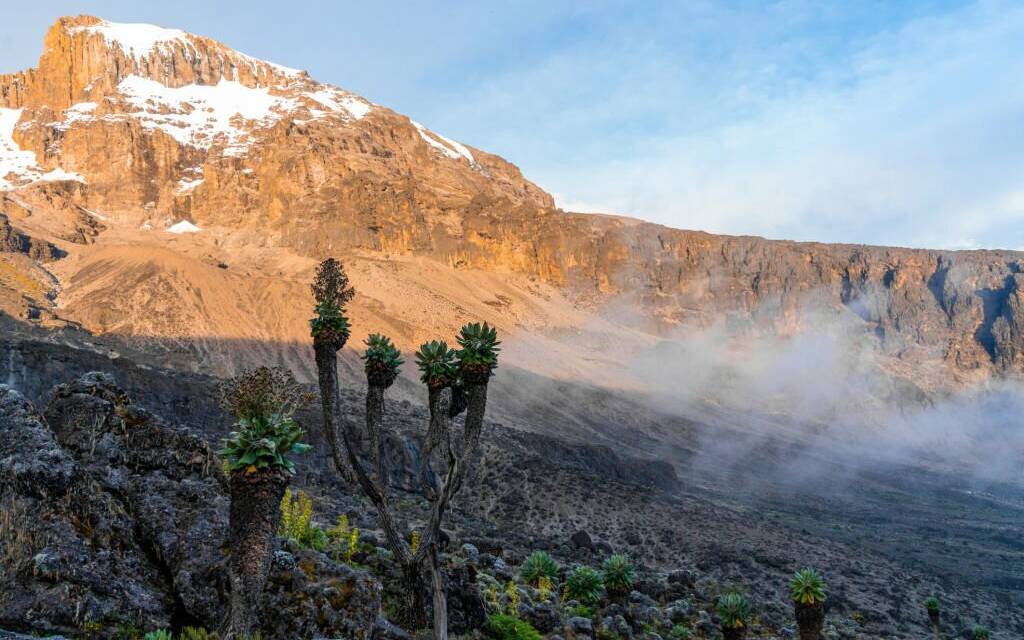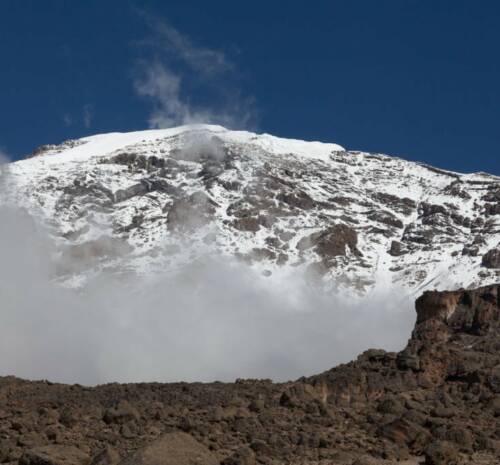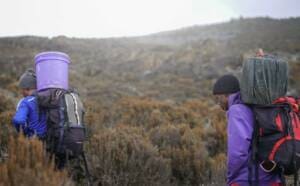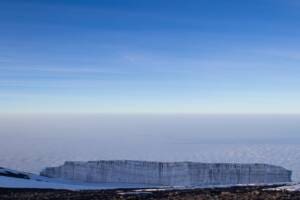Introduction to the Lemosho Route
Mount Kilimanjaro, the highest peak in Africa, is a dream destination for many adventure enthusiasts. It offers breathtaking views and a once-in-a-lifetime experience. The Lemosho Route, one of the most scenic and less crowded routes to the summit, is a popular choice among trekkers. In this article, we will explore why the Lemosho Route is worth considering for your Kilimanjaro adventure.
Why choose the Lemosho Route?
The Lemosho Route stands out among the various routes to Mount Kilimanjaro’s summit for several reasons. Firstly, it provides a longer and more gradual ascent, allowing for better acclimatization. This increases your chances of reaching the summit successfully and reduces the risk of altitude sickness. Secondly, the Lemosho Route offers stunning scenery and diverse landscapes, ranging from lush rainforests to alpine deserts. The route also has fewer trekkers compared to other popular routes, providing a more peaceful and intimate experience with nature.
Overview of Mount Kilimanjaro
Standing at an impressive height of 5,895 meters (19,341 feet), Mount Kilimanjaro is the highest freestanding mountain in the world. Located in Tanzania, it attracts climbers from all over the globe. Kilimanjaro is a dormant volcano with three volcanic cones: Kibo, Mawenzi, and Shira. The Lemosho Route approaches the mountain from the west, allowing trekkers to witness the majestic beauty of all three cones during their journey.
Preparing for your Lemosho Route trek
Before embarking on your Lemosho Route trek, adequate preparation is essential. Firstly, ensure you have a thorough medical check-up to assess your fitness level and discuss any pre-existing conditions with your doctor. It is also advisable to engage in a regular exercise routine to improve your cardiovascular endurance and strength. Additionally, familiarize yourself with the symptoms of altitude sickness and learn how to manage them effectively. Finally, research and invest in high-quality gear and equipment suited for the challenging conditions you will encounter on the Lemosho Route.

Lemosho Route itinerary and highlights
The Lemosho Route typically takes around 7 to 8 days to complete, allowing for proper acclimatization. The journey begins at the Londorossi Gate, where you will register and meet your experienced guides and porters. As you ascend, you will pass through various ecological zones, including the lush rainforest, heath, and moorland. Highlights of the Lemosho Route include the Shira Plateau, an expansive high-altitude desert, and the Barranco Wall, a thrilling and challenging climb. The final push to the summit is from Barafu Camp, where you will witness a breathtaking sunrise over the glaciers before reaching Uhuru Peak.
Climbing Mount Kilimanjaro: Tips and advice
Climbing Mount Kilimanjaro is a physically and mentally demanding endeavor. Here are some tips and advice to help you make the most of your Lemosho Route trek. Firstly, maintain a slow and steady pace throughout the climb to conserve energy and improve acclimatization. Remember to stay hydrated and eat nutritious meals to keep your energy levels up. It is crucial to listen to your body and communicate any discomfort or symptoms to your guides. Finally, embrace the journey and enjoy every step, as the experience on the Lemosho Route is as much about the process as it is about reaching the summit.
Safety measures on the Lemosho Route
Safety should be a top priority when climbing any mountain, especially one as challenging as Mount Kilimanjaro. The Lemosho Route is considered relatively safe, but it is essential to follow certain precautions. Firstly, ensure you are accompanied by experienced guides and porters who are familiar with the route and can provide assistance when needed. Always listen to their instructions and adhere to their guidance. It is also advisable to have travel insurance that covers any potential emergencies or medical evacuations. Additionally, be aware of the symptoms of altitude sickness and inform your guides immediately if you experience any.
Accommodation and facilities on the Lemosho Route
During your Lemosho Route trek, you will be staying in tents provided by your tour operator. The campsites along the route are equipped with basic facilities, including toilets and dining areas. However, it is important to note that the facilities become more basic as you ascend to higher altitudes. It is advisable to bring your own sleeping bag and sleeping pad for added comfort. The tour operator will typically provide meals, but it is a good idea to carry some snacks and water purification tablets for additional sustenance.
What to pack for the Lemosho Route
Packing the right gear and clothing is crucial for a successful and comfortable trek on the Lemosho Route. Here is a list of essential items to pack:
- Clothing: Layering is key to adapting to changing temperatures. Pack moisture-wicking base layers, insulating mid-layers, and a waterproof outer shell. Don’t forget warm hats, gloves, and thermal socks.
- Footwear: Invest in sturdy and comfortable hiking boots with ankle support. It is also advisable to bring gaiters to protect your feet from dust and debris.
- Equipment: Bring a good quality backpack, trekking poles for stability, and a headlamp for early morning starts. A high-altitude sleeping bag, sleeping pad, and a water bladder or bottles are essential as well.
- Toiletries and Medications: Carry sunscreen, lip balm, wet wipes, and basic toiletries. Pack any necessary medications, including altitude sickness medication, pain relievers, and blister treatment.
- Miscellaneous: Don’t forget a camera to capture the stunning landscapes, a portable charger for electronic devices, and a small first aid kit.
Physical fitness and training for the Lemosho Route
Physical fitness plays a crucial role in the success of your Lemosho Route trek. It is recommended to engage in a comprehensive training program at least three to six months before your climb. Focus on cardiovascular exercises like hiking, running, and cycling to improve your endurance. Strength training, including exercises targeting the legs, core, and upper body, will help build the necessary muscles for the challenging terrain. Additionally, incorporate regular hikes with a weighted backpack to simulate the conditions you will encounter on Mount Kilimanjaro.
Conclusion: A life-changing experience on the Lemosho Route
Embarking on the Lemosho Route to the summit of Mount Kilimanjaro is an adventure of a lifetime. The route unique features, breathtaking landscapes, and gradual ascent make it a popular choice among trekkers. By adequately preparing, following safety measures, and embracing the journey, you can make your Lemosho Route trek a memorable and life-changing experience. So lace up your boots, pack your gear, and get ready to conquer the Roof of Africa – Mount Kilimanjaro.
If you’re ready to embark on this incredible journey to the Roof of Africa, book your Lemosho Route trek today and make your dream of climbing Mount Kilimanjaro a reality!






